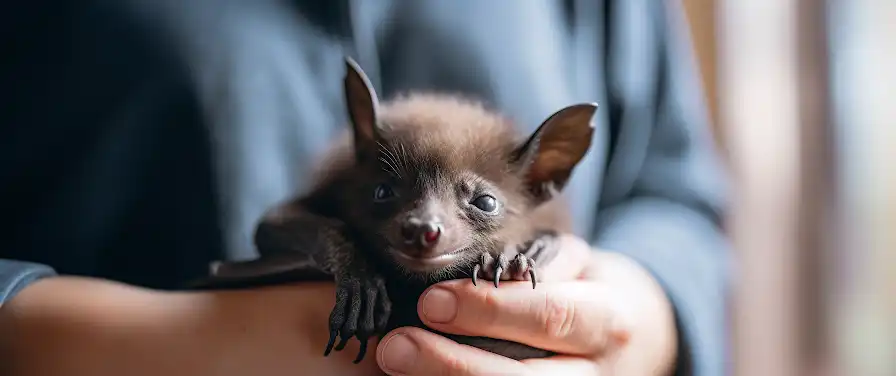
We’ve all seen it in horror movies – Sleek, scary creatures swooping eerily against the backdrop of a full moon, striking fear into the hearts of onlookers. But, spoiler alert! These creatures aren’t Dracula wannabes; they are just bats that play a much bigger role in our bat ecosystem than just being props in scary movies. These misunderstood creatures are integral for pollination and controlling insect populations. There’s a good chance bats are the best friends you never knew you had!
Just like you, though, they need a place to call home. And while they may be great superstars outdoors, we all can agree on one thing – bats don’t make for ideal house guests. A bat infestation isn’t just an unsettling surprise for homeowners, but can also pose potential health and structural issues. Like cars in the wrong hands can be a recipe for disaster, bats in the wrong places can be as well.
Here’s where we pose a critical question: How do we go about removing these unwelcome guests? The answer lies in humane bat removal. Co-existing with nature is key, so the goal isn’t elimination, but exclusion. Humane bat removal ensures you regain your peace of mind, without granting bats an untimely end. Think about it, you wouldn’t want your unexpected guest chased away with a broom, would you? But rather, shown the exit in a respectful yet firm manner. Now that’s a cliffhanger worth unraveling, isn’t it? So, let’s swing by the fascinating world of bats and their behavior. Here we go!
The Importance of Humane Bat Removal

As individuals, we must consider the environmental impact and understand the importance of humane bat removal. Bats, while considered pests by some, play a crucial role in our ecosystem. Exterminating them in a harmful manner causes substantial ecosystem disruptions and can lead to long-term consequences.
Bats are excellent pollinators and a natural pest control agent. The loss or diminution of bat colonies because of inhumane practices can lead to a rise in pest populations and even threaten plant life, disrupting the balance of entire ecosystems.
Contrary to popular belief, the majority of bat species feed on nectar or insects, acting as both pollinators and pest control. For instance, a single bat can consume thousands of insects in one night, which leads to a considerable decrease in pesticide use.
Why is it Illegal to Kill Bats in Some Jurisdictions?
Recognizing the substantial ecological role and the potential risk of extinction, many global jurisdictions have made it illegal to kill bats. These laws protecting bats reflect an ecological understanding of their important function within the ecosystem.
It’s important to consider that bats are historically under threat due to destruction of their natural habitats. Killing them only exacerbates this issue, causing a decline in bat populations, which can have wide-ranging ecological implications.
Violating these laws can lead to hefty fines or even imprisonment, showcasing the significance of this issue on a legislative front. Furthermore, from an ethical viewpoint, considering the threats bats already face, it is inhumane to further contribute to their struggles.
Legal proceedings aside, employing humane bat removal techniques respects the bats’ ecological role while addressing the human need for bat control. It’s the perfect balance for preserving both man-made and natural habitats.
As we transition to the next section of our discussion, “Bat Exclusion Methods: A Humane Approach,” it is vital to firmly grasp this understanding of the bats’ role in our ecosystem and the legal implications surrounding their protection. Educating ourselves about the humane bat exclusion methods can help us contribute to the preservation of these wonderful creatures while maintaining the sanctity of our homes.
Conclusion
In our pursuit of coexisting harmoniously with the spectrum of species that inhabit this wonderful planet, we hope you now understand the importance of humane bat exclusion methods. Bats, although often seen as scary and disease-spreading creatures, play an incredibly vital role in maintaining the balance of our ecosystem. By adopting appropriate and compassionate practises, we can ensure their safety while also securing our homes.
Remember, bats are not just incidental visitors. They form an integral part of our environment and have a significant role to play, both in pest control and the pollination of plants. They exhibit the beauty of the myriad ways life on Earth manifests itself and reminds us of our part in its conservation.
As we conclude, let’s focus on the essence of our message. Before you consider implementing exclusion methods, ensure the presence of bats. Bats in your home may perform a beneficial service by eating insects. Only when their presence becomes a problem should you resort to relocating them. Be sure those methods are grounded in respect and kindness.
The task of humane bat removal should not be a DIY project. Engaging professionals with experience in bat exclusion ethics ensures that you adhere to local laws and avoid causing harm to these fascinating creatures. Professionals would also take care to clean up any remaining bat droppings to avoid any health hazards.
In conclusion, let’s remember our duties as responsible earthlings. We must seek balance rather than absolute dominance over the animal kingdom. After all, variety is the spice of life and who are we to upset this beautiful equilibrium of ecology. When it comes to co-existing with bats, it is always wiser and beneficial, in the long run, to say yes to humane bat exclusion methods.
Remember to respect all creatures, large and small, and value their contributions to our world. It’s the least we can do for our shared home on Earth.




